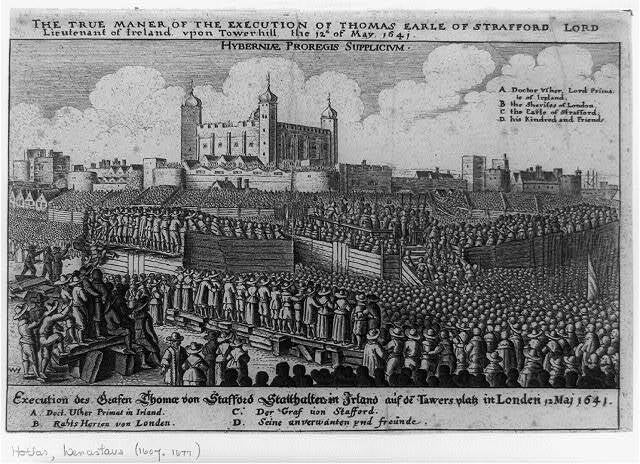I’m starting a new series of posts and blogs which look at some of the fascinating people and events from the 17th Century. As this page is all about female 17th Century fashion, I’ll be concentrating on women, who are often overshadowed by more macho personalities. So, here goes...
4th January 1642 – King Charles I attempts to arrest five members of Parliament at the Palace of Westminster. Many consider this to be the event which kick started the English Civil Wars, or, at the very least, after which there was no turning back on the road to hostilities between King and Parliament.
Lucy Hay, Countess of Carlisle -
Sir Anthony van Dyck 1636
So, what’s Lucy Hay got to do with it? Lucy, Countess of Carlisle, was a lady in waiting to Queen Henrietta Maria. The story goes that in the days leading up to the proposed arrests the Queen was overly excited and when Lucy enquired of the reason, the Queen confessed all to her favourite attendant, believing the Countess to be utterly faithful to her royal mistress. However, Lucy had Parliamentarian sympathies, and was rumoured to be the mistress of John Pym, one of the members who was to be arrested. It is believed by some to have been Lucy who informed the members of the King’s intentions. When the King arrived at Westminster with 400 armed men, being forewarned, ‘the birds had flown’.
So, what motivated Lucy? As well as her connection to Pym, during the 1630s Lucy had struck up a very close friendship with Thomas Wentworth, Earl of Strafford. Strafford was a hard headed and ambitious Yorkshireman who had been appointed Lord Deputy of Ireland in 1632, ruling there as if he was, in fact, king. When trouble erupted in Scotland in 1637, as the king’s most able servant, Strafford was recalled from Ireland to assist in bringing the Scots to heel.
Thomas Wentworth, Earl of Strafford - Sir Anthony van Dyck
King Charles needed money to raise and equip troops for the enterprise and he needed Parliament to vote him these funds through taxation. However, Charles had dissolved Parliament back in 1628. Stafford urged the king to bypass Parliament and bring over troops from Ireland. Charles ignored Stafford’s advice and recalled Parliament in 1640 after eleven years of ruling without them.
The returning MPs had many grievances with the monarch regarding their rights and privileges, and demanded these be addressed before extra monies were granted. One of their demands was the Earl of Stafford’s head. The Earl was tried for treason and found innocent by a very slim majority. Not content with the outcome, Parliament impeached Strafford and he was pronounced guilty by act of attainder – meaning there was no need for a trial.
King Charles still had the power to save Strafford’s life, as the law required the royal signature on the death warrant. Charles dithered, as he knew Strafford was by far the most able of his advisers. Strafford heroically begged the king to sacrifice him. The king finally signed the warrant and Strafford was executed by beheading on 12th May 1641. Lucy may never have forgiven King Charles for agreeing, however reluctantly, to the death of her closest ally.

The Execution of the Earl of Strafford - Wenceslas Hollar 1641
After the debacle of 4th January, the kingdom quickly descended into unrest and civil war. The king and royal family fled London. The ruling classes picked their sides and rallied their tenants and supporters to their colours. The king raised his Royal Standard in Nottingham on 22nd August with the first armed encounter between royalist and parliamentarian troops happening at Powick Bridge near Worchester on 23rd September, followed by the first – indecisive – pitched battle at Edgehill a month later. What followed was years of warfare, battles, and sieges.
Lucy, Countess of Carlisle’s true loyalties are hard to pin down. She seems to have operated as some sort of double agent, spying for both sides at some point or other. During the continuing troubles of the 1650s Lucy was imprisoned for a time in the Tower of London.
What do you think? Was it Lucy who informed her friends of the king’s intention to arrest them? And what were her motives? If you’d like to find out more about Lucy, Countess of Carlisle, I highly recommend you read ‘Country Wife and Court Lady’ by Lita-Rose Betcherman - a biography of Lucy and her older sister Dorothy, Countess of Leicester.


Add comment
Comments